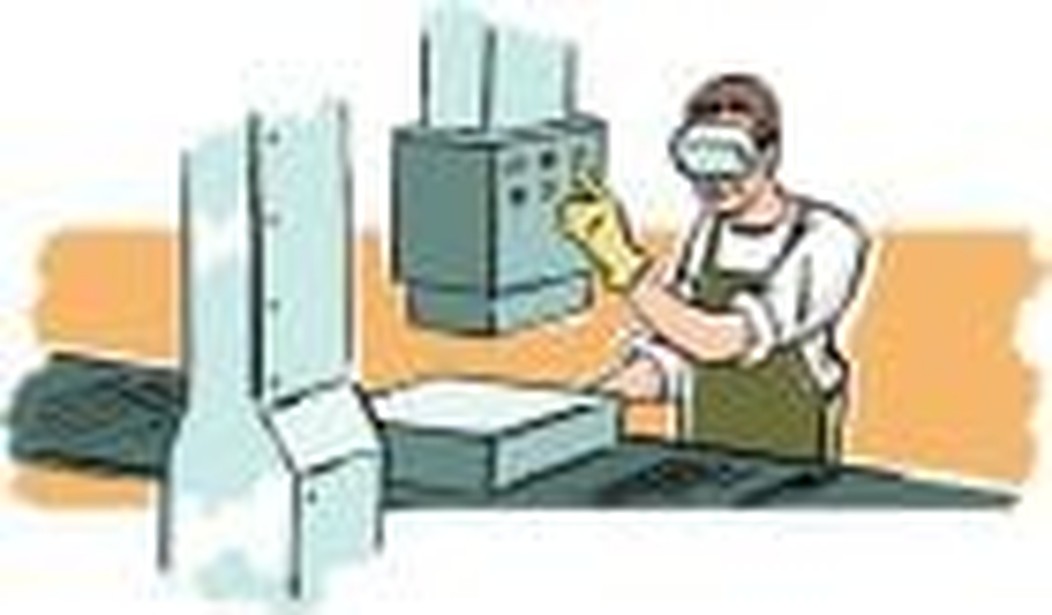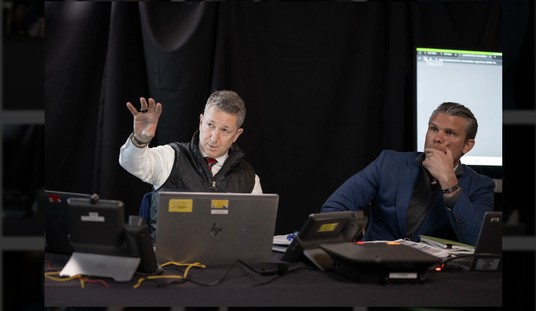Though they have their disagreements, Democratic presidential contenders Barack Obama and Hillary Clinton, who faced off in Cleveland, Ohio, Tuesday evening, clearly agree on one supposedly “obvious” thing — that manufacturing in the United States is in decline.
Mr. Obama’s economic platform calls for a “comprehensive energy independence and climate change plan [that] will invest in America’s highly-skilled manufacturing workforce and manufacturing centers” — as if there isn’t enough investment now.
Mrs. Clinton, in the “Strengthening the Middle Class” pitch at her web site (Item 2 near the bottom), says that “the manufacturing base can be re-energized,” apparently assuming that it is currently lackluster.
The candidates are worrying needlessly. American manufacturing on the whole is, and has been, growing.
You wouldn’t think so from reading the mainstream media. Reporters, politicians, and others repeatedly note that manufacturing’s contribution to the economy has fallen from about 25% of gross domestic product (GDP) in the mid-1960s to just over about 12%. That line of reasoning is supposed to end the “deindustrialization” debate.
It does. But it’s the deindustrialization argument that disintegrates — once you remember that today’s economy is over 3 1/2 times bigger than the economy of 1965.
This chart, based on data at Uncle Sam’s Bureau of Economic Analysis for components of GDP and GDP growth through 2006, shows how manufacturing has grown in real terms (2007 data is not yet available):

As you can see, the real value of manufacturing output grew at an average rate of about 1% a year from 1965 until 1982, the bottom of the post-Carter-era recession. From that year on, through the remaining Reagan years, Bush 41, Clinton, and first few years of Bush 43, manufacturing growth averaged about 1.5% a year.
In 2003 and 2004, in their attempt to set the presidential table for Democratic candidate John Kerry, some commentators (examples here and here) tried to portray the manufacturing sector as approaching death. Those reports were, and are, to say the least, exaggerated. From 2003 to 2006, manufacturing growth averaged over 2.3%. There’s every reason to believe that real growth in manufacturing continued in 2007.
Okay, what about the decline in total manufacturing jobs? Well, that’s due to productivity and calls for a history lesson.
In 1945, 16% of Americans worked in agriculture. By 2000, that percentage had shrunk to 1.9%. Yet, as with manufacturing, and despite steep, long-term, productivity-driven drops in the prices of agricultural commodities, agriculture’s GDP has grown consistently in real terms — but just not as fast as other sectors in the economy.
When’s the last time you read somebody fretting over the “de-agrification of America” and longing for workers to head back out into the fields? And why would it be a bad thing if, over the next few decades, we’re able to get ever more value out of manufacturing with fewer people as long as overall unemployment stays low?
There are two remaining issues to address.
One is the unevenness of manufacturing growth throughout the country. Tuesday’s debate site is among the areas, along with Metro Detroit and others largely in the Midwest, that have experienced real manufacturing declines.
But why is that? I would suggest that the following table, which compares the state and local tax burdens of the various states in 2007 and 2003, provides a large part of the answer (source: The Tax Foundation):

It’s clear that very few states have done a good job of keeping their residents’ tax burdens under control during the past four years. Manufacturing in high-tax Ohio has suffered greatly, as it has in top-tier taxer Michigan. The Buckeye and Wolverine States’ high and rising tax burdens have driven many businesses away and caused others to look elsewhere at expansion time.
By contrast, next-door Indiana isn’t perfect. But when Honda was looking for a place to build its next assembly plant, it chose a Hoosier State site in Greensburg over one in Ohio. It’s not difficult to see why. Meanwhile, low-tax states like Alabama, Mississippi, and Georgia have landed several major auto plant prizes and most of the parts-feeding plants that go with them. A state that wants manufacturing to grow has to work on creating a climate conducive to growth. Hillary Clinton and Barack Obama can’t do that for them.
The other looming issue relates to national security. It may be that our inability to make things ourselves might leave us vulnerable to a hostile foreign power that could withhold those things from us or gain concessions by threatening to. I believe there is some substance to this argument, especially as it relates to retaining or rebuilding a domestic military equipment manufacturing capacity and (if there is even any left today) a machine tool industry.
But I don’t think you will read that either Democratic candidate has attempted to address how to do that — or even recognized its importance.
Tom Blumer is a CPA based in Mason, Ohio, outside of Cincinnati. He presents personal finance-related workshops and speeches at companies, and runs BizzyBlog.com.









Join the conversation as a VIP Member